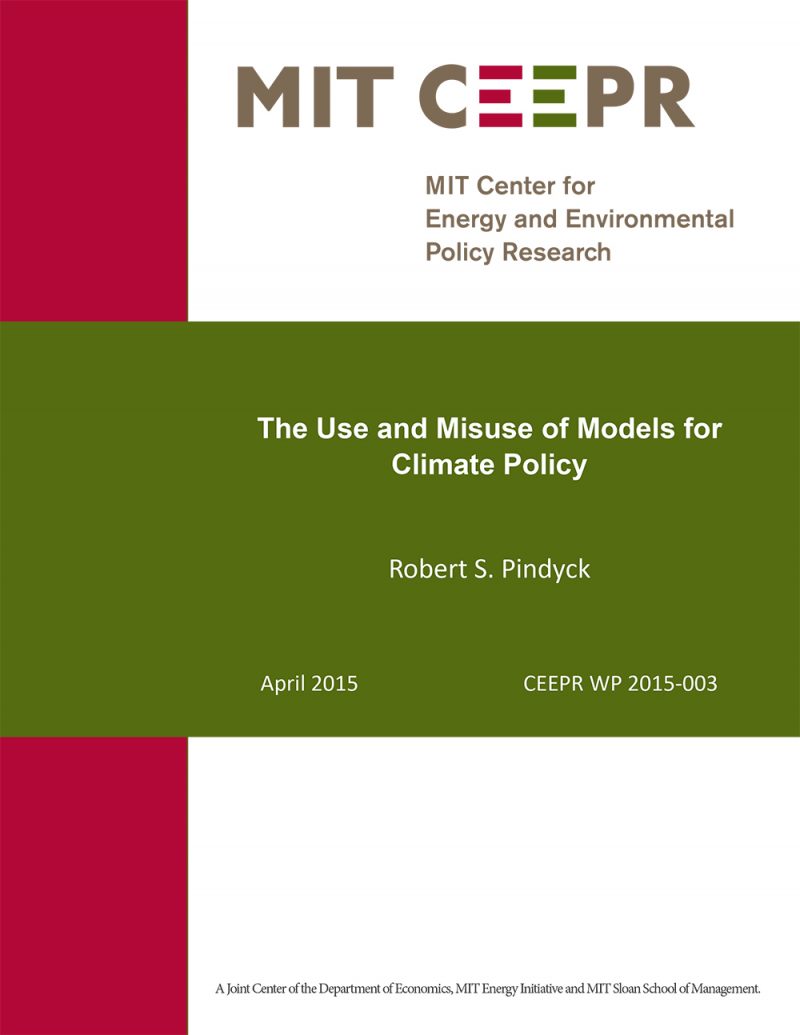The Use and Misuse of Models for Climate Policy
Robert S. Pindyck
April 2015
In recent articles, I have argued that integrated assessment models (IAMs) have flaws that make them close to useless as tools for policy analysis. IAM-based analyses of climate policy create a perception of knowledge and precision that is illusory, and can fool policy-makers into thinking that the forecasts the models generate have some kind of scientific legitimacy. But some have claimed that we need some kind of model, and that IAMs can be structured and used in ways that correct for their shortcomings. For example, it has been argued that although we know little or nothing about key relationships in the model, we can get around this problem by attaching probability distributions to various parameters and then simulating the model using Monte Carlo methods. I argue that this would buy us nothing, and that a simpler and more transparent approach to the design of climate change policy is preferable. I briefly outline what that approach would look like.
Keywords: Environmental policy, GHG abatement, uncertainty, outcome distributions, fat-tailed distributions, global warming, climate change, economic impact, catastrophic outcomes.



